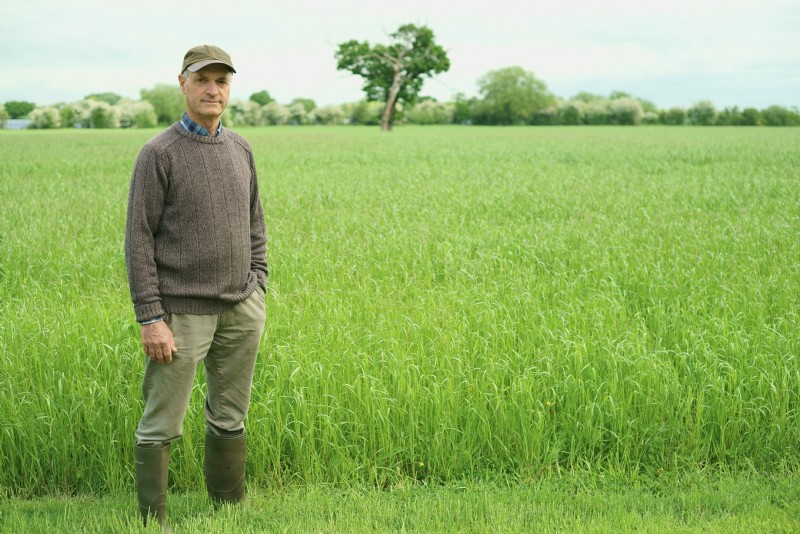

Michael North took over the 200 acre farm in Oddington in Oxfordshire from his father and now farms it with his son. It’s gone through several significant changes during that time. In the past it was a mixed farm, with herds of dairy and beef cattle, until, around twenty-five years ago when the Norths started growing hay to feed their dairy herd, and one year sold some to the equine market. ‘It worked very well, so we grew some more, and it’s taken off from there,’ Michael explains simply.
Indeed the hay business proved so successful that Michael soon took the decision to get rid of the cattle altogether and though he’s left 40-50 acres for wheat, the farm now specialises in growing grass for hay.
An even more recent change concerns the grass leys they use to produce the hay. Previously a two year ryegrass ley was used right across the farm, but in the past 4-5 years Michael has given over several acres to straight Timothy, in order to extend the season with a later harvest.
The two year ryegrass ley, or hard horse hay ley, is principally a cutting ley, sown in the autumn to provide stemmy hay the following spring. Whereas the Timothy is cut towards the end of June, when the ryegrass is past its best.
Timothy is one of the most important and flexible species, both environmentally and agriculturally. It will grow abundantly on heavy ground and, although it only has a shallow root structure, it still persists well on lighter land in dry years. From an agricultural perspective Timothy is a very persistent and hardy grass, free of disease and produces forage that’s acceptable to most livestock.
‘It’s just me and my son doing the hay-making, so depending on the weather, it can be a short job but generally it’s rather long and drawn out and we needed a break,’ Michael says. ‘The ryegrass can all come at once and we were pushed to get it all out while it was still at the right stage. The Timothy gives us a bit of a breather and means we still make some good hay later in the season.’
The Timothy hay makes good hard hay which is ideal for horses and has sold well, even though there’s a limited market for it. ‘Some people won’t touch it and others love it,’ he says.
The Timothy is not grazed but the fields containing the two year ryegrass ley are grazed in the spring by 100-200 sheep from a neighbouring farm in order to take out old growth and keep the grass young and lush. Sheep are also put on to the second year ley in the autumn if it’s dry enough, in order to keep it grazed down. If the winter is mild there can be too much growth, meaning that it tends to go ‘old and dead’ before we can get to it, Michael explains. ‘So sheep are definitely a must for us.’
Date Posted: 16th February 2017



